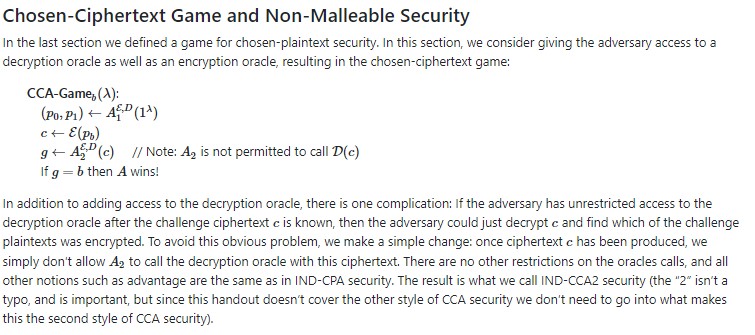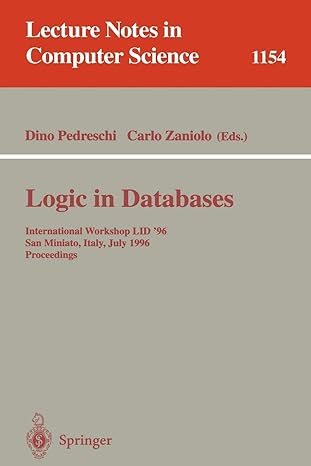Answered step by step
Verified Expert Solution
Question
1 Approved Answer
Example 3 . Using these notions of security, we now have a very firm and clear basis to show why ECB mode is not chosen
Example Using these notions of security, we now have a very firm and clear basis to show why ECB mode is not chosenplaintext
secure and hence should be avoided whenever possible. In particular, consider the following adversary definition:
: Block size bits
larr A block of
larr A block of all
return
:
if then
return
else
return
Since ECB mode is deterministic, the call to the encryption oracle in will return the same ciphertext as the game oracle
produced for input to if and only if the oracle was playing the game with so the adversary will always win the game! Since
the probability that the adversary wins is the advantage of the adversary is which is clearly a nonnegligible probability.
Therefore this adversary breaks the security of ECB mode, and shows that ECB mode is not secure against chosen plaintext attacks.
This adversary in fact wins against any deterministic encryption scheme, meaning that no deterministic encryption scheme can be
secure against chosenplaintext attacks! This surprises a lot of people who tend to think of encryption schemes as deterministic:
feed in plaintext, and you get the same ciphertext each time although it looks like incomprehensible gibberish This observation is
the theoretical justification that has led to the way encryption is used in practice: no encryption scheme is typically used in practice
without adding some randomization. Block ciphers use modes like CBC mode that introduce a random initialization vector IV
and inpractice use of RSA which we'll study later includes randomized padding techniques such as OAEP.
Question In Example it was shown that ECB mode is insecure with respect to chosenplaintext attacks using an adversary that
made a single call to the encryption oracle. It is actually possible to define an adversary that breaks chosenplaintext security
without using the encryption oracle directly at all! Define such an adversary. Hint: Make the challenge plaintexts multiple blocks so
that you can look for blocktoblock patterns in the ciphertext.
ChosenCiphertext Game and NonMalleable Security
In the last section we defined a game for chosenplaintext security. In this section, we consider giving the adversary access to a
decryption oracle as well as an encryption oracle, resulting in the chosenciphertext game:
In addition to adding access to the decryption oracle, there is one complication: If the adversary has unrestricted access to the
decryption oracle after the challenge ciphertext is known, then the adversary could just decrypt and find which of the challenge
plaintexts was encrypted. To avoid this obvious problem, we make a simple change: once ciphertext has been produced, we
simply don't allow to call the decryption oracle with this ciphertext. There are no other restrictions on the oracles calls, and all
other notions such as advantage are the same as in INDCPA security. The result is what we call INDCCA security the isn't a
typo, and is important, but since this handout doesn't cover the other style of CCA security we don't need to go into what makes
this the second style of CCA security
Solve Question Your presentation is as important as coming up with the solution here. Your solution should be similar to what is in Example of the reading: clearly define the adversary algorithms, with pseudocode, and analyze probabilities.

Step by Step Solution
There are 3 Steps involved in it
Step: 1

Get Instant Access to Expert-Tailored Solutions
See step-by-step solutions with expert insights and AI powered tools for academic success
Step: 2

Step: 3

Ace Your Homework with AI
Get the answers you need in no time with our AI-driven, step-by-step assistance
Get Started


